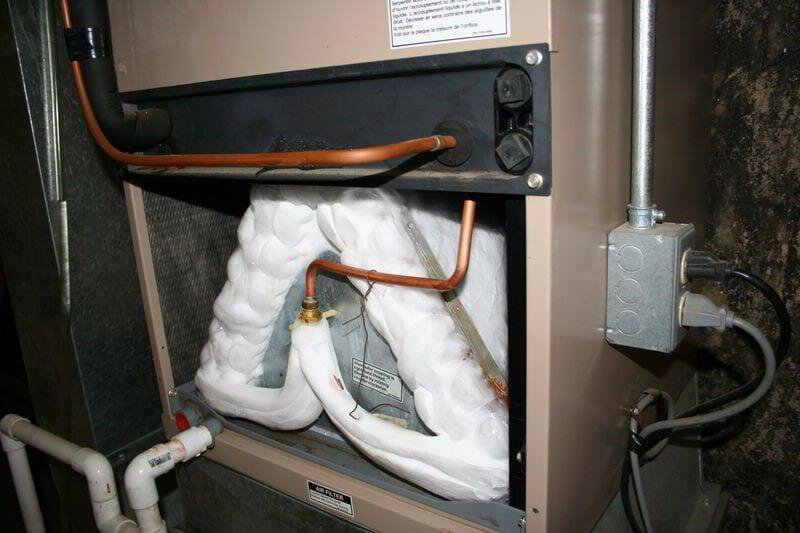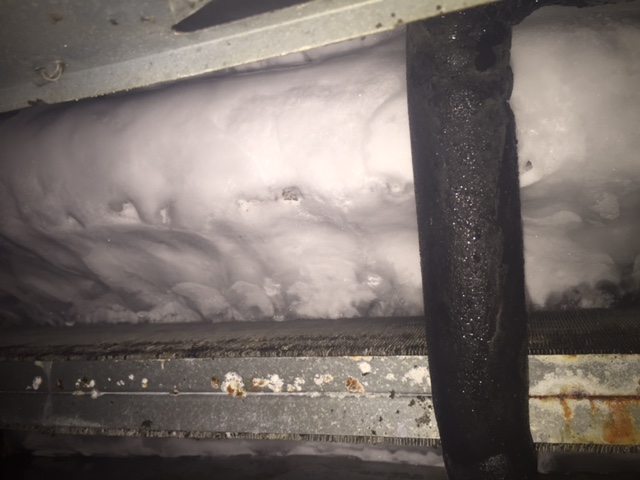Actions to Take When Your AC Pipe Freezes: Essential Guidance
Actions to Take When Your AC Pipe Freezes: Essential Guidance
Blog Article
Listed here in the next paragraph you can discover more dependable answers pertaining to Why Is Ice On My Outside Air Conditione.

Intro
Discovering that your air conditioning pipeline is frozen can be concerning, especially during warm summertime when you rely on your ac system the most. Comprehending what to do in such a situation is vital to prevent more damages to your cooling system and ensure your comfort inside.
Recognizing the Causes
A number of elements can add to the cold of an air conditioning pipeline. Comprehending these reasons can help you address the concern effectively.
Absence of Airflow
One common source of a frozen air conditioning pipeline is inadequate airflow. When the air movement over the evaporator coil is restricted, it can trigger the coil to drop below freezing temperature, bring about ice development on the pipe.
Reduced Refrigerant Levels
Not enough cooling agent levels in your air conditioning system can additionally lead to an icy pipeline. Reduced refrigerant levels can cause the stress in the system to drop, resulting in the freezing of moisture on the evaporator coil.
Winter Conditions
In colder environments, freezing temperatures outside can contribute to the cold of air conditioning pipelines. If your air conditioning device is not appropriately protected or if there are leaks in the ductwork, chilly air can penetrate the system, causing the pipeline to ice up.
Dirty Air Filters
Filthy or clogged up air filters can restrict air movement in your air conditioning system, causing various issues, consisting of an icy pipeline. It's necessary to change or cleanse your air filterings system consistently to make certain appropriate airflow and protect against ice accumulation.
Signs of a Frozen AC Pipe
Identifying the signs of an icy air conditioning pipeline is vital for prompt activity.
Decreased Airflow
If you see a considerable decline in air flow from your vents, it can indicate an icy pipeline.
Ice Buildup on the Pipe
Noticeable ice buildup on the refrigerant line or the evaporator coil is a clear sign of a frozen air conditioning pipeline.
Strange Sounds from the Unit
Unusual noises, such as hissing or gurgling, coming from your air conditioning system can signal that there's ice present on the pipe.
Immediate Actions to Take
When confronted with an icy AC pipe, it's necessary to act swiftly to avoid additional damages to your cooling system.
Turning off the AC
The initial step is to shut off your a/c unit to prevent the system from running and intensifying the issue.
Looking for Blockages
Check the area around the interior device for any blockages that may be blocking air flow, such as furniture or curtains.
Thawing the Pipe
You can use gentle techniques like putting towels soaked in warm water around the frozen pipe to help thaw it slowly.
Preventive Measures
Taking safety nets can assist prevent future incidents of a frozen air conditioning pipe.
When DIY Methods Fail
If your efforts to thaw the pipeline or address various other problems are not successful, it's time to hire a professional.
Relevance of Hiring a Professional HVAC Technician
A licensed HVAC professional has the know-how and tools needed to detect and repair problems with your air conditioner system safely and properly.
Regular Maintenance Checks
Arrange routine upkeep consult an expert HVAC service technician to make certain that your AC system is running efficiently.
Altering Air Filters
Frequently change or cleanse your air filters to stop air movement constraints and keep optimum efficiency.
Shielding Exposed Pipes
If your a/c pipelines are subjected to chilly temperature levels, think about protecting them to prevent cold throughout winter season.
Seeking Professional Help
If DIY methods fall short to settle the issue or if you're not sure about just how to proceed, it's best to seek assistance from a certified HVAC professional.
Conclusion
Taking care of an icy a/c pipe can be a frustrating experience, yet understanding just how to respond can aid reduce damages and restore convenience to your home. By understanding the causes, identifying the signs, and taking timely action, you can successfully resolve the issue and stop future events.
Frozen AC Line: Why It Happens & What To Do About It
A frozen AC line can be a rather peculiar sight in a place like Phoenix, Arizona where nothing ever freezes. In this post, we’ll discuss what makes an air conditioner line frozen – and what you can do about it.
Dirty Air Filters
Did you know that you should be cleaning or replacing your air filters on a monthly basis? Failing to do this can result in airflow issues that, in turn, cause your evaporator coils and lines to freeze over. You’ll notice a buildup of ice on both components, although the buildup on your pipes will, of course, be more evident unless you open your air condition up to reveal the coils.
What To Do About It
Give your air filter a good cleaning if it’s reusable. If not, replace the filter outright. Next, switch your air conditioner’s fan setting on and leave it there for 2-3 hours. This will draw warm air in, helping to thaw your evaporator coil. You can also check out this article for some tips on cleaning the coils themselves if you’d like to speed the process up. Before you switch the unit back to its normal state, make sure the supply vents are completely unobstructed and free of dust or other debris.
If you keep having this issue even after replacing your filters regularly, contact a local HVAC repair company and have them inspect your evaporator coil, ductwork, and any other components that may be at fault. If you live in the Phoenix, Arizona area, give American Home Water and Air a call.
Low Refrigerant Levels/Leakage
What To Do About It
Contrary to what air conditioner “recharge” companies often tell their clients about refrigerant, it should never need to be simply refilled. You see, refrigerant runs in what experts refer to as a “closed loop.” Refrigerant really shouldn’t be leaving that loop. If it is, you’ve got a leak.
Paying someone to come and pump more refrigerant into your system (aka “recharge” it) isn’t the solution. Doing that will simply kick the can down the road. Besides, refrigerant leaks can be harmful to the environment and people in your home.
Rather, you need to take care of the leak with the help of a technician. Check out this article for some more information about dealing with air conditioners that are leaking refrigerant. Before you contact a technician, switch your thermostat to the off position. Then, switch the fan setting on and let it run for 2-3 hours so the unit can thaw.
Improper Temperature Setting
Improper temperature settings can also cause a drop in your air conditioner’s pressure. What many people don’t realize is that air conditioners are actually designed to run when temperatures have fallen above roughly 60 degrees Fahrenheit. If you run the unit when it’s cold outside, you’ll run into many issues, including frozen components.

I'm just very interested by Have a Frozen AC Line? Here’s How to Fix It and I'm hoping you enjoyed reading my entry. Are you aware of anybody else who is fascinated about the topic? Feel free to share it. Many thanks for taking the time to read it.
Schedule Estimate Report this page